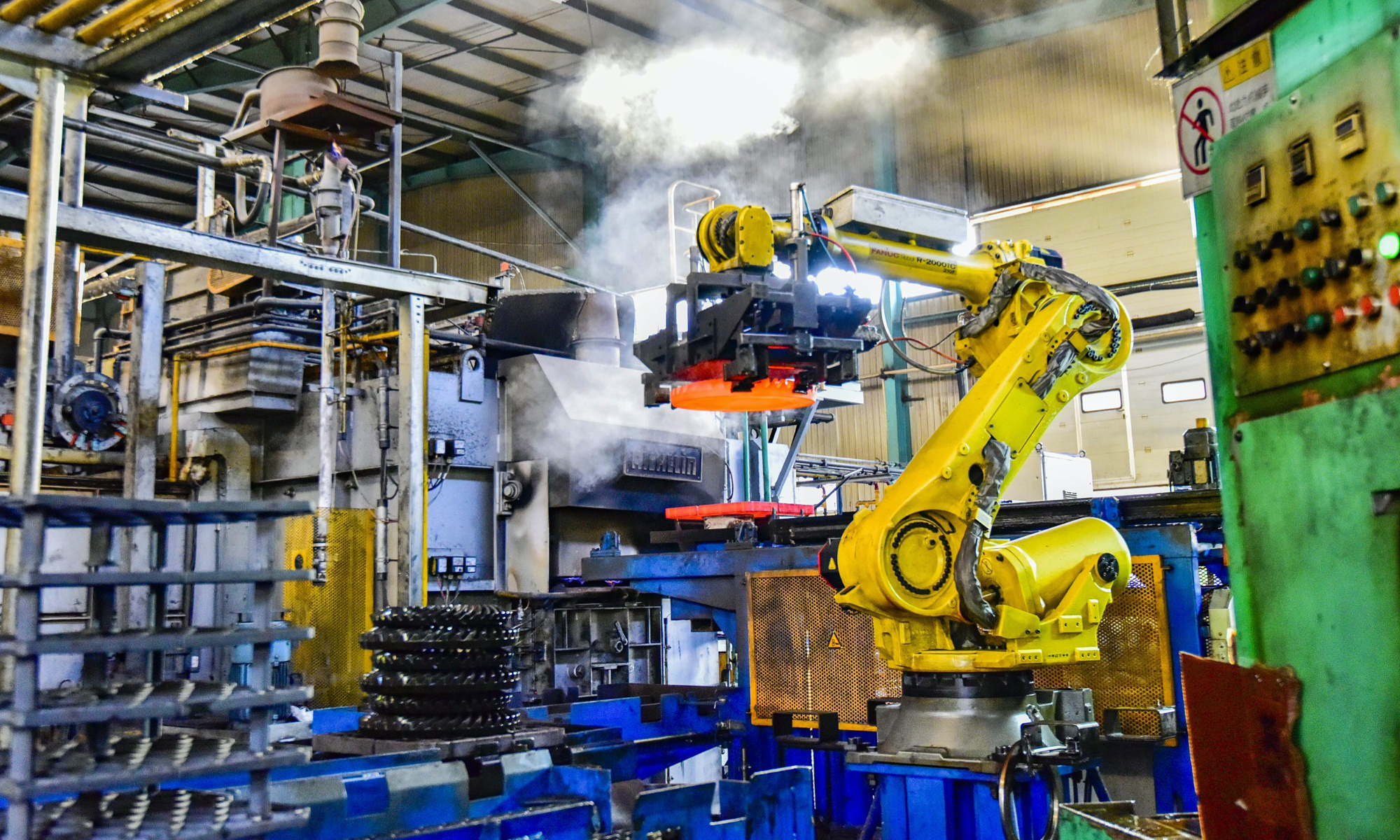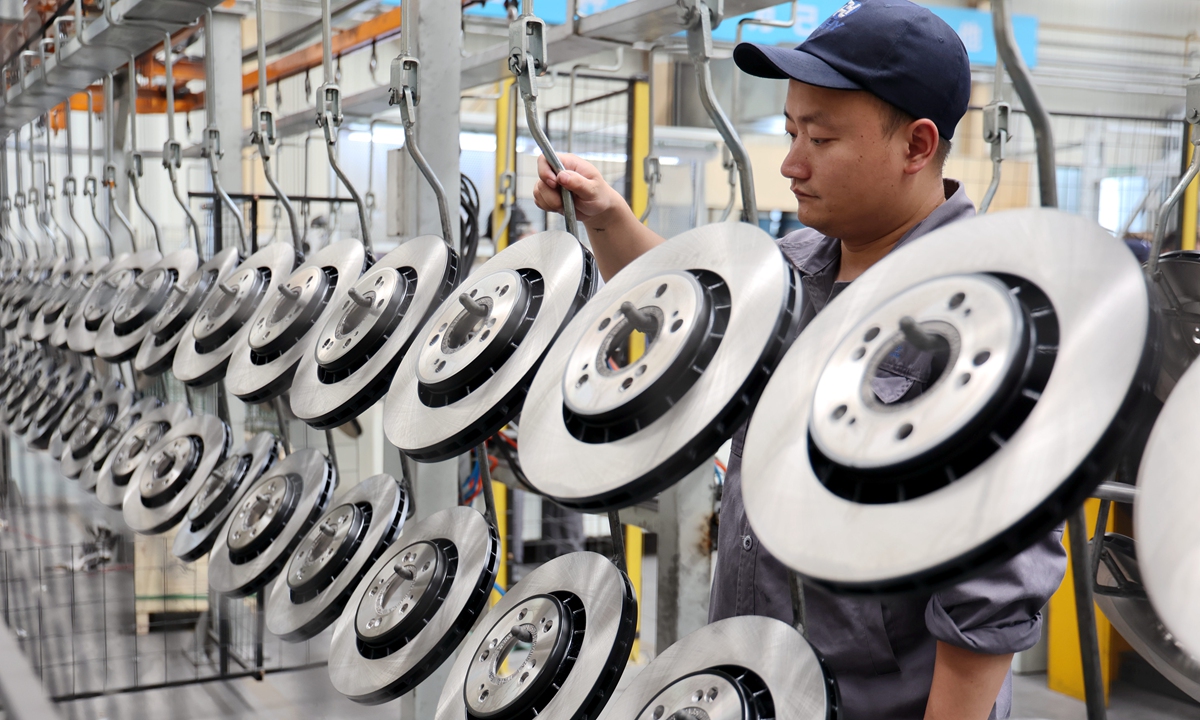
PMI Photo: VCG
China's manufacturing activity fell back into contraction territory in October, missing market expectations that the official purchasing managers' index (PMI) would maintain momentum from the previous month when the index jumped into expansion territory for the first time in six months.
The pre-release of consumer demand prior to the 8-day Mid-Autumn Festival and National Day holidays, and continuous weak overseas demand caused by a lackluster global economy have negatively impacted on China's manufacturing activity in October, observers said.
However, short-term fluctuation does not amount to proof that Chinese economy is "crisis-ridden" as some Western media outlets have hyped. With recent stimulus measures gradually taking effect, economic indicators will pick up in the months to come, they said.
The official manufacturing PMI fell to 49.5 in October from 50.2 from the previous month, data from the National Bureau of Statistics (NBS) showed on Tuesday.
A reading below 50 indicates a contraction in the manufacturing sector, while above 50 indicates expansion.
The decline in the manufacturing PMI in October is related to factors such as the high base in September and early release of consumer demand prior to the golden holidays, according to NBS Statistician Zhao Qinghe.
In breakdown of sub-indexes, the production index came in at 50.9, down 1.8 percentage points compared with September. The index in industries such as petroleum, coal and other fuel processing, chemical fiber and rubber plastic product remained below the 50 mark, signifying the slowdown in activity.
The new order index stood at 49.5 in October, a decrease of 1.0 percentage points from the previous month. The proportion of enterprises in industries such as textiles, chemical raw materials and chemical products, ferrous metal smelting and rolling processing that reflect insufficient market demand exceeded 60 percent.
Notably, the new export order index edged down 1.0 percentage points to 46.8 in October, mirroring subdued overseas demand.
"The export order index indicates that the external market demand has not improved, meanwhile, we need to further expand domestic consumer demand," said Tian Yun, a veteran economist based in Beijing.
There are also other factors that are dragging down the manufacturing index. For example, the manufacturing industry remains in the destocking stage which takes time to digest the backlog of inventory, and the structural adjustment in the real estate sector remains ongoing, Wu Chaoming, a deputy head of the Chasing Research Institute, told the Global Times on Tuesday.
Despite the dip in production activity and new orders in October, manufacturing operators have shown stabilizing signs lately.
Data from the NBS showed the expectation index for production and operating activities stood at 55.6, an increase of 0.1 percentage points from the previous month. The index has been reported within a relatively high range for four consecutive months.
As for PMI readings in the remainder of the year, some analysts believe it will fluctuate around the 50 mark while showing an upward trend as recently launched government stimulus package could induce more investment as well as home consumption.
Macroeconomic policies have been ramping up as the central government seeks to stabilize growth, including the issuance of an additional 1 trillion yuan ($137 billion) in treasury bonds and passing a bill to allow local governments to frontload part of their 2024 bond quotas.
"The bond effect will be better reflected in November and December when small and medium-sized enterprises will be intensively paid by local governments and the firms will soon sign new contracts for 2024," Tian told the Global Times on Tuesday.
"The uncertainty whether the manufacturing PMI will stand above the 50 mark mainly comes from the real estate market. Judging from data in October, the effect of real estate supportive policies did not exceed expectations," Wu said.
The NBS also revealed the PMI for non-manufacturing sector in October which stood at 50.6.
Driven by the long holiday effect, the business activity indexes of railway transportation, air transportation, accommodation, catering and public facilities management related to residents' travel and consumption are all in the high-prosperity range above 55.
Global Times



